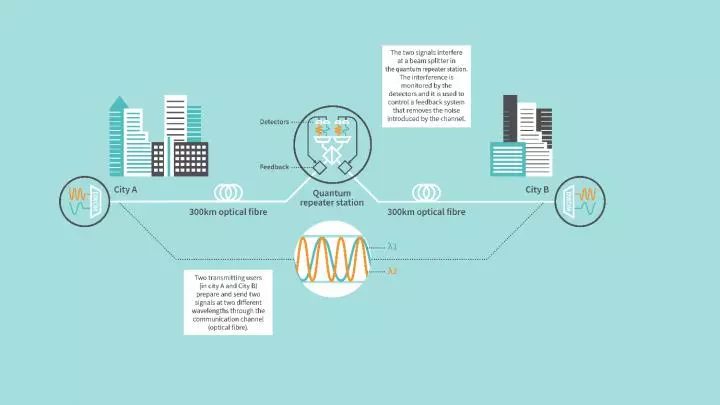A quantum internet could one day allow quantum computers to team up and tackle some gigantic problems. Now the world is a step closer to that reality, as researchers at Toshiba have demonstrated quantum communications sent over a record-breaking 600 km (373 miles) of optical fiber.
In traditional computers, information is encoded in bits represented as either a zero or one. But in quantum computers, information is encoded in quantum bits (or qubits) that can be either, or both at the same time. That drastically expands their potential computing power, meaning they could tackle problems beyond the scope of regular computers.
Last year, for instance, a Chinese quantum computer called Jiuzhang apparently performed a calculation in 200 seconds that would take a regular supercomputer 2.5 billion years to complete.
But the challenge with quantum computing is that these qubits are sensitive to interference from the environment, with tiny fluctuations in temperature or vibrations threatening to scramble the data. That makes it difficult to transmit quantum information over long distances.

Now, researchers at Toshiba are staking a claim to the distance record for quantum communications via optical fibers. The key was a new dual band stabilization technique they developed, which sends two optical reference signals along with the qubits themselves, which are encoded as a phase delay of a weak optical pulse.
The first reference signal is at a wavelength designed to cancel out fluctuations from the environment, while the second one operates on the same wavelength as the qubits themselves and is used to precisely control the phase of the light.
Using this dual band technique, the Toshiba team was able to keep the quantum signal constant to within a few dozen nanometers. That in turn allowed them to transmit the data over 600 km of optical fibers, around six times farther than the previous record. It’s not the furthest ever though – satellite transmission holds the overall record of more than 1,200 km (746 miles), but a quantum internet would need a mix of both satellites and optical fibers.
The team says that the first use of the technology would likely be for Quantum Key Distribution (QKD). This encryption technique takes advantage of the weird rule of quantum physics where the very act of observing the key will change it, rendering it useless for a potential hacker and alerting authorized users to the attempt.
"QKD has been used to secure metropolitan area networks in recent years,” says Andrew Shields, Head of the Quantum Technology Division at Toshiba Europe. “This latest advance extends the maximum span of a quantum link, so that it is possible to connect cities across countries and continents, without using trusted intermediate nodes. Implemented along with Satellite QKD, it will allow us to build a global network for quantum secured communications.”
The breakthrough was described in a paper in the journal Nature Photonics.
Source: Toshiba via Eurekalert




